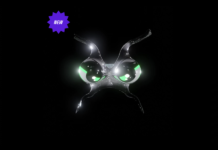On June 14th Dassault Systèmes announced that it has entered into a definitive agreement to acquire a majority stake in Centric Software, a privately-owned industry market leader driving digital transformation with software innovation in the fashion, apparel, luxury and retail sectors. Headquartered in California’s Silicon Valley and with offices in 13 countries, Centric Software provides product lifecycle management software solutions to more than 600 globally-recognized brands including ASICS, Bass Pro, Belle China, Bestseller, Etam, Kate Spade, Loblaws, Louis Vuitton, Michael Kors, Samsonite, Ted Baker, Tommy Hilfiger and others. In 2017, Centric Software grew over 60 percent for a revenue of $61 million and generated positive net income. Centric’s industry-specific collaborative PLM platform is used for merchandise planning, product specifications, materials management, product sourcing, cost scenarios, collection management, calendar management and quality management, on desktop and also optimized for mobile devices, to increase efficiency, accelerate time to market, and improve sales and product margins.
Dassault Systèmes: the agreement
With this investment, Dassault Systèmes aims to accelerate the digital transformation of companies seeking solutions for the increasingly complex development of collections that respond to today’s on-trend and on-demand consumers, representing a multi-billion dollar total addressable market.
Under the terms of the agreement, Dassault Systèmes will acquire for cash a majority ownership of Centric Software, which will be comprised between 58 and 69 percent depending on the Centric Software shareholders’ election, and an advance payment on the acquisition of the remainder of the shares, which will take place in 2020 and 2021. The total consideration for the acquisition of 100 percent of Centric Software’s equity will depend on Centric Software’s revenue growth and profitability in the two years to come, and will be comprised between four and six times 2019 and 2020 revenues.




